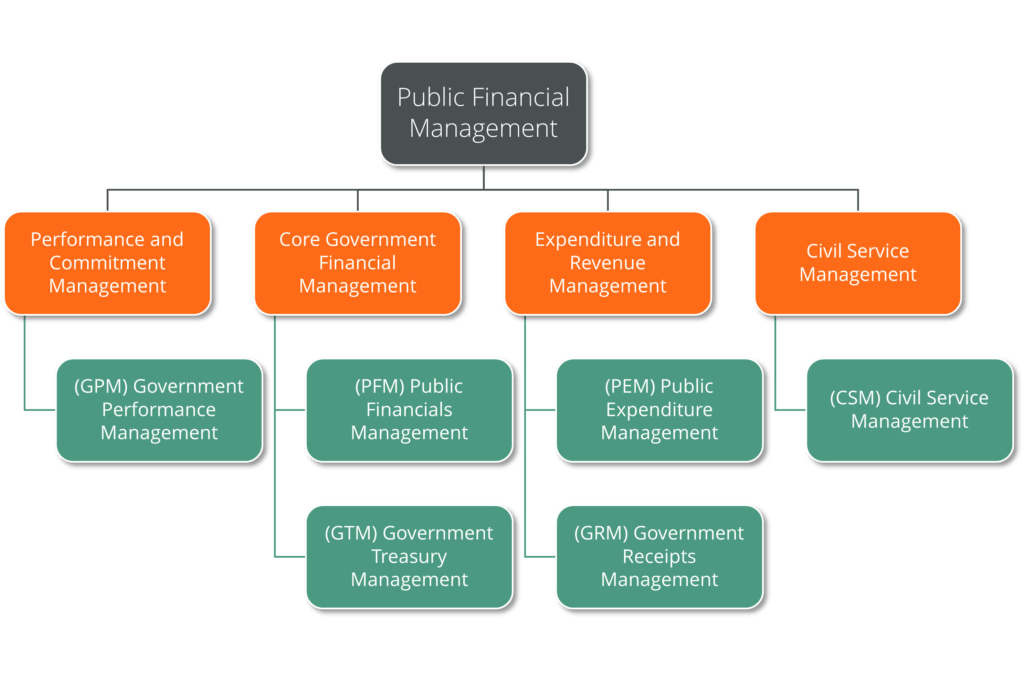Embracing digital solutions for public financial management can improve efficiency, effectiveness, economic value and equity. This increases transparency, promotes good governance and helps to build public trust.
Digital solutions come in many shapes and sizes. Many are aimed at private companies (known as Enterprise Resource Planning tools or ERP) rather than focused on Government Resource Planning (GRP), and cover the digital evolution from digitization of government information, through digitalization, to large-scale digital transformation.
This article delves deeper into these three distinct stages of digital evolution and explores the benefits they bring to public financial management.
The Benefits of Digitization, Digitalization and Digital Transformation in Public Financial Management
The International Monetary Fund (IMF) recognizes the profound impact that digital solutions can have on PFM, including:
- Reduced manual errors and enhanced efficiency of financial transactions, ensuring the optimal use of public funds
- Improved expenditure control and monitoring through budget planning and allocation tools
- Enhanced budget credibility through access to real-time and accurate financial data
- Improved risk management enhancing the government’s ability to respond to vulnerabilities effectively.
Different governments are at different stages of digital evolution, depending on their individual country’s economic, social or political circumstances. Some will be starting at the initial stage of digital PFM, whereas others will be ready to make the leap into large-scale transformation activity. However, regardless of starting point, taking the next step in implementing digital solutions for PFM offers wide benefits.
Realizing the Benefits of Digitization
Digitization marks the initial phase in the journey towards modernizing PFM. It involves the conversion of manual financial processes into digital formats, enhancing accessibility to financial information and increasing accuracy and reporting capabilities. However, digitization may inadvertently lead to duplications in various financial processes within government departments, potentially limiting its impact.
Digitalization: Streamlining for Efficiency
Digitalization takes the next step by automating entire end-to-end processes within PFM. This automation reduces duplication within each financial process, making it easier to input, store, and analyze information. While digitalization offers a significant improvement over digitization, its effectiveness depends on whether it’s consistently applied across all relevant government departments. Without uniform implementation, duplication can still occur, creating complexity and resource inefficiencies in government-wide analysis.
Digital Transformation: Maximizing Efficiency and Accuracy
The pinnacle of digital evolution in PFM is digital transformation. It involves a holistic rethinking of financial management processes, aiming to leverage digital technology to its full potential. Digital transformation offers the greatest potential to maximize efficiency and accuracy while minimizing administrative resource requirements and the risk of human error. However, the success of digital transformation hinges on its consistent rollout across all areas responsible for public financial management, as selective implementation can introduce duplication within the system.
Digital Tools for each Stage of the Budget Cycle
FreeBalance developed the Public Financial Management Component Map (PFMCM) to describe the full range of government financial and associated non-financial functions. These include: Government Performance Management, Public Financial Management, Government Treasury Management, Public Expenditure Management, Government Receipts Management, and Civil Service Management. These functions support governments across the budget cycle.

Each component in the PFMCM can be improved via digital tools. Digitizing any of these functions via the FreeBalance Accountability SuiteTM improves accessibility to information, accuracy, and reporting within each PFM component. Using FreeBalance tools at digitalization stage can automate processes, enhancing efficiency and streamlining data input, storage, and analysis, reducing duplication. And working with FreeBalance to transform PFM revolutionizes management practices, optimizing efficiency, and minimizing administrative resource requirements.
Each stage in the journey towards digital transformation in public financial management offers benefits, and the choice of the right approach depends on the government’s readiness and capacity for change. For some government bodies, digitization is a big step forwards, however the power of digital transformation is not just in its automation but in its potential to revolutionize the way governments manage public finances, leading to more effective governance and better financial outcomes for citizens worldwide. FreeBalance has almost 40 years’ experience in supporting governments to reform their PFM practices, and partners with customers to design an approach which fits the government’s strategic and operational needs.
To find out more about how FreeBalance can support your organization, wherever you are on your digital journey, contact one of our PFM experts.
